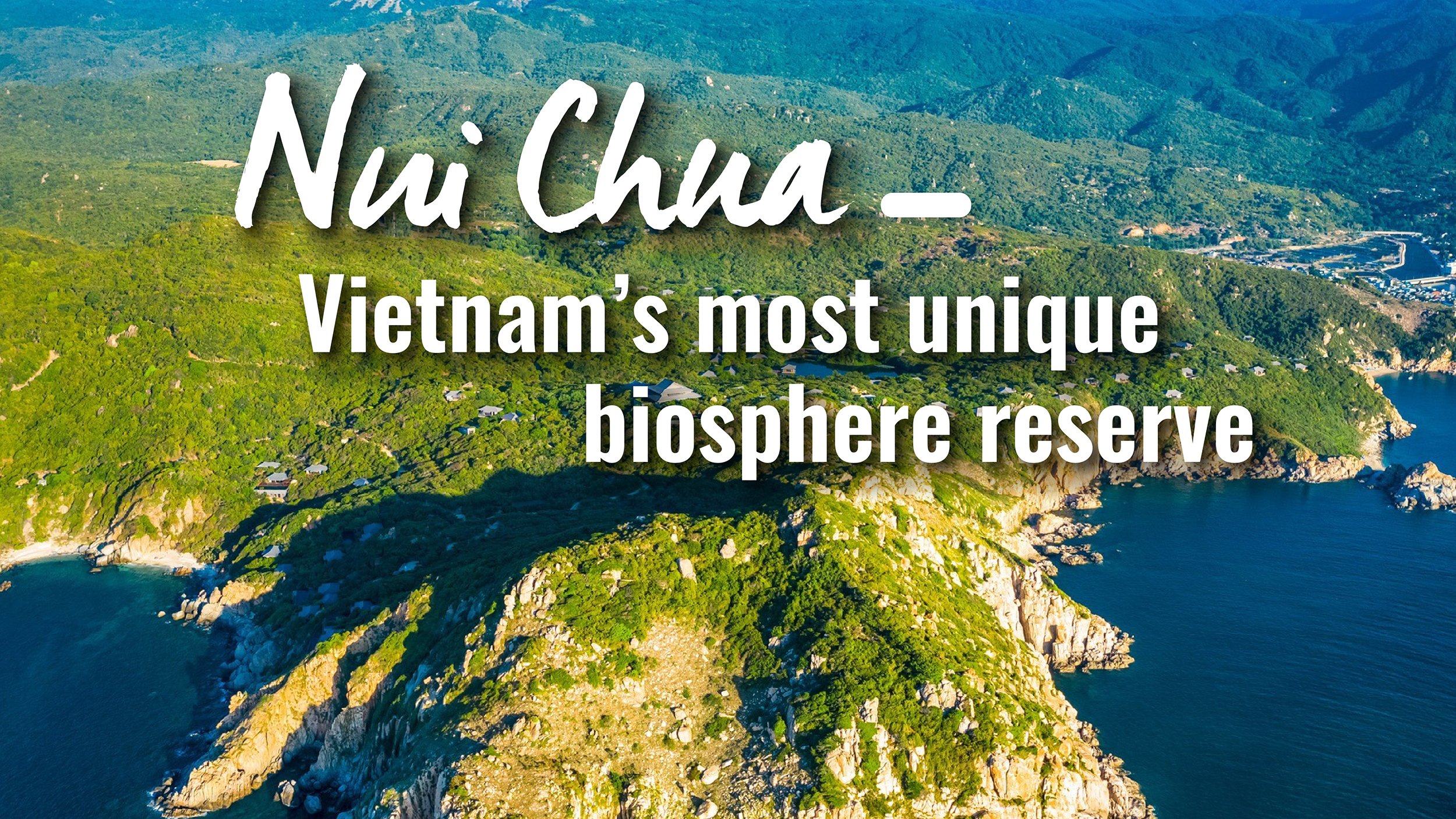Situated in Ninh Thuan province, Nui Chua Biosphere Reserve encompasses both terrestrial and marine areas, covering a total area of 106,646 hectares. This includes two core zones of Nui Chua National Park and Nui Chua Marine Protected Area. The total core area spans 15,752 hectares, with a buffer zone of 48,762 hectares and a transition zone of nearly 42,132 hectares.
The Nui Chua World Biosphere Reserve lies within the administrative boundaries of four districts and cities in Ninh Thuan province, comprising 44 communes, wards, and towns. The total population is approximately 447,162 people, including over 120,000 ethnic minorities such as the Cham, Raglai, Hoa, Tay, Nung, Muong, and others.
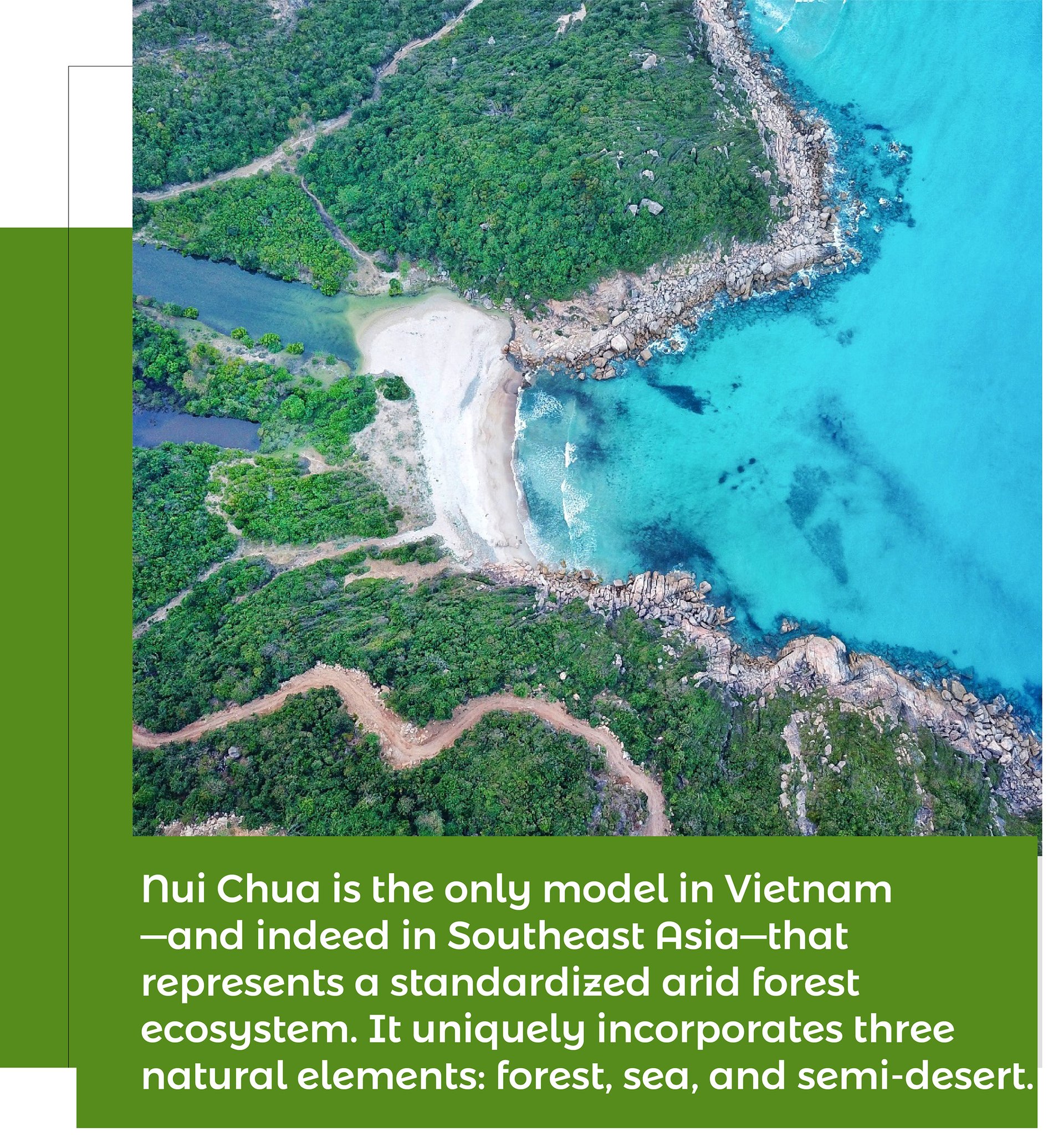

Tran Van Tiep, Director of Nui Chua National Park, shared that the Nui Chua Biosphere Reserve is the only standardised model in Vietnam—and indeed in Southeast Asia—that represents a true arid forest ecosystem. It encompasses tropical, arid, and evergreen forests, as well as rare coniferous species characteristic of a semi-humid tropical climate, all of which contribute to its remarkable ecological integrity.
“Nui Chua Biosphere Reserve uniquely integrates three natural elements: forest, sea, and semi-desert. Its horizontal evergreen forests and overlapping mountain peaks blend harmoniously with the distinctive arid landscape, making it ideally suited for the promotion of ecotourism and immersive nature-based experiences,” said Tiep.
According to the World Wildlife Fund (WWF), the forest ecosystem of Nui Chua is highly distinctive as it lies within the Truong Son ecological region. It is recognised as one of the 200 globally significant ecoregions and has been identified as a top conservation priority among the world’s most biodiverse habitats.
The Nui Chua World Biosphere Reserve is renowned for its high level of biodiversity, showcasing a rich variety of plant and animal species, ecosystems, and genetic resources. These are closely linked to the core zones of Nui Chua National Park's special-use forest, the Nui Chua Marine Protected Area, and surrounding forest regions.

The flora of the biosphere reserve is especially diverse. To date, scientists have recorded at least 1,514 plant species, including 27 endemic to Nui Chua and the South Central region. Notably, 54 plant species found here are listed as threatened in both the IUCN Red List and Vietnam’s Red Data Book. The reserve also hosts 1,532 vascular plant species across five phyla. Among these, magnoliophyta dominate with 1,237 species, accounting for 96.64% of Vietnam’s total plant species. Ferns are represented by about 25 species, while pinophyta (conifers) include 12 species, among others.
The fauna of the Nui Chua Biosphere Reserve is equally rich. Currently, there are 763 animal species documented, spanning 354 genera, 214 families, and 46 orders. These include 353 vertebrate species: 79 mammals, 161 birds, 62 reptiles, 21 amphibians, 31 freshwater fish, and 410 insect species. Initial statistics show that the reserve harbours 60 rare animal species—48 of which are listed in Vietnam’s Red Data Book as endangered, and 34 are classified as globally threatened species.
In addition, Nui Chua’s marine ecosystems are extraordinarily vibrant. The coral reef system consists of 307 species, including 46 newly recorded species for Vietnam. Most are hard corals that form extensive reefs, with a healthy average coverage of 30%. The area also supports 297 species of reef fish across 116 genera and 43 families, along with 150 species of benthic animals (84 genera, 51 families) and 174 species of seaweed. Remarkably, Nui Chua is one of the rare locations in Vietnam where endangered sea turtles such as green turtles and hawksbill turtles come ashore to nest—ranking second only to Con Dao in terms of nesting populations.
According to Tran Van Tiep, the reserve’s extraordinary geographical setting and harsh climate—with average annual rainfall of just 700–800 mm—have shaped a rare and resilient biodiversity. “As part of Vietnam’s national marine spatial planning and Ninh Thuan’s broader socio-economic development strategy, Nui Chua Biosphere Reserve is poised for further growth. In the coming years, it will play an increasingly vital role in biodiversity conservation and sustainable development, contributing meaningfully to the implementation of Resolution No. 36 of the Party Central Committee on the strategy for sustainable marine economic development by 2030, with a vision to 2045,” he affirmed.
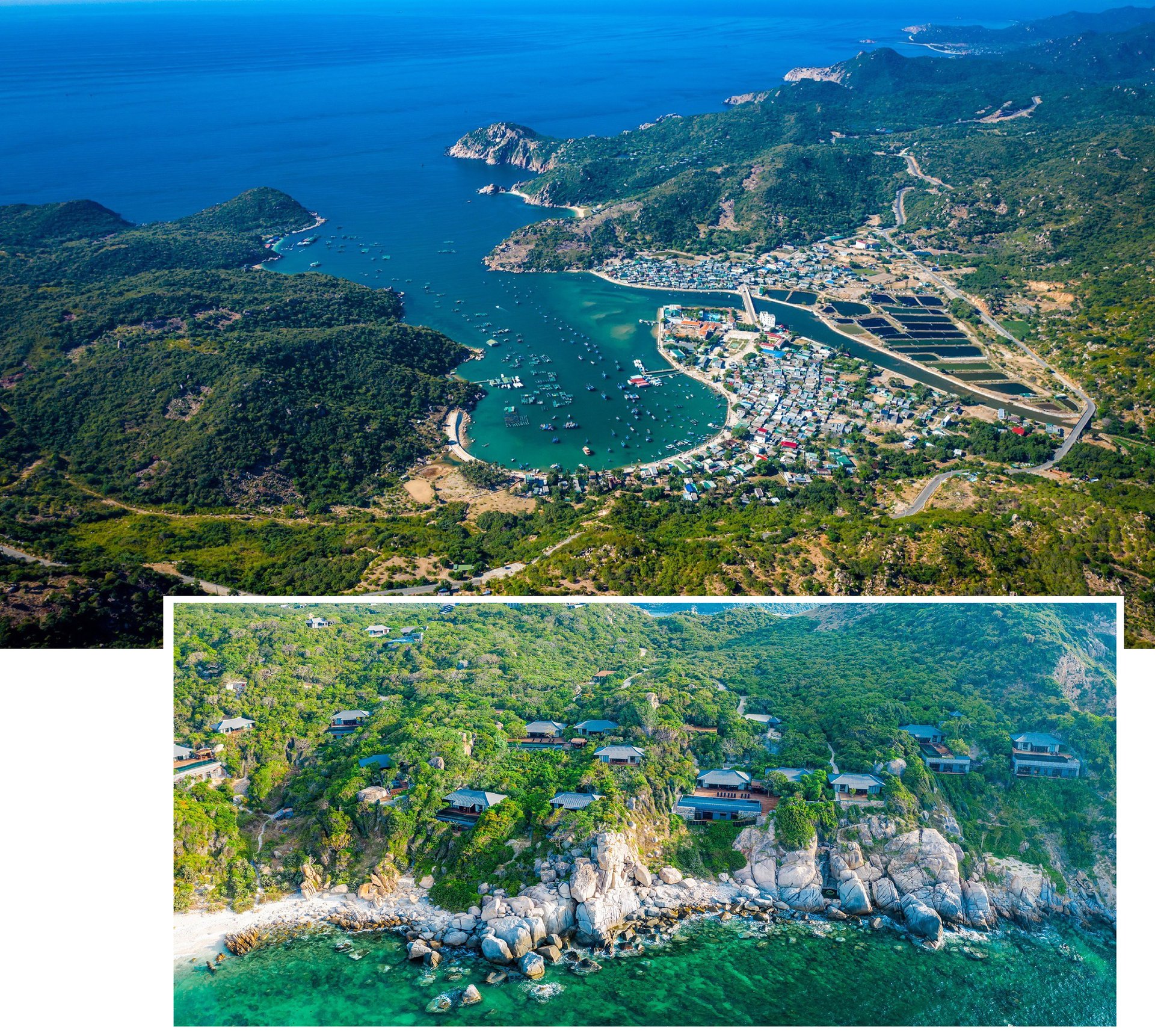

Beyond its biodiversity, the Nui Chua World Biosphere Reserve is also distinguished by its rich tapestry of tangible and intangible cultural heritage, particularly that of indigenous ethnic groups such as the Cham. The enigmatic architecture of ancient Cham towers is interwoven with vibrant festivals, traditional folk music, and dances, highlighted by the rhythmic sounds of Ghinang drums, the melodic Baranung lute, and the graceful Apsara dances. Local craft villages, such as My Nghiep (known for its brocade weaving) and Bau Truc (renowned for its pottery), further enrich the cultural landscape. These heritage values are being actively preserved and promoted by Ninh Thuan’s authorities and cultural agencies, contributing significantly to tourism development and providing stable, sustainable livelihoods for the local population.
Pham Van Xiem, Head of the Office at Nui Chua National Park, noted that several ethnic communities, including the Raglai and Cham, reside throughout the core and buffer zones of the vast biosphere reserve. Life remains challenging for many of them. To prevent human intervention in the ecosystem, the park has continually supported and encouraged local communities to pursue environmentally sustainable livelihoods while preserving their cultural and social identity, guided by the principle: “Conservation for development, development to conserve.”
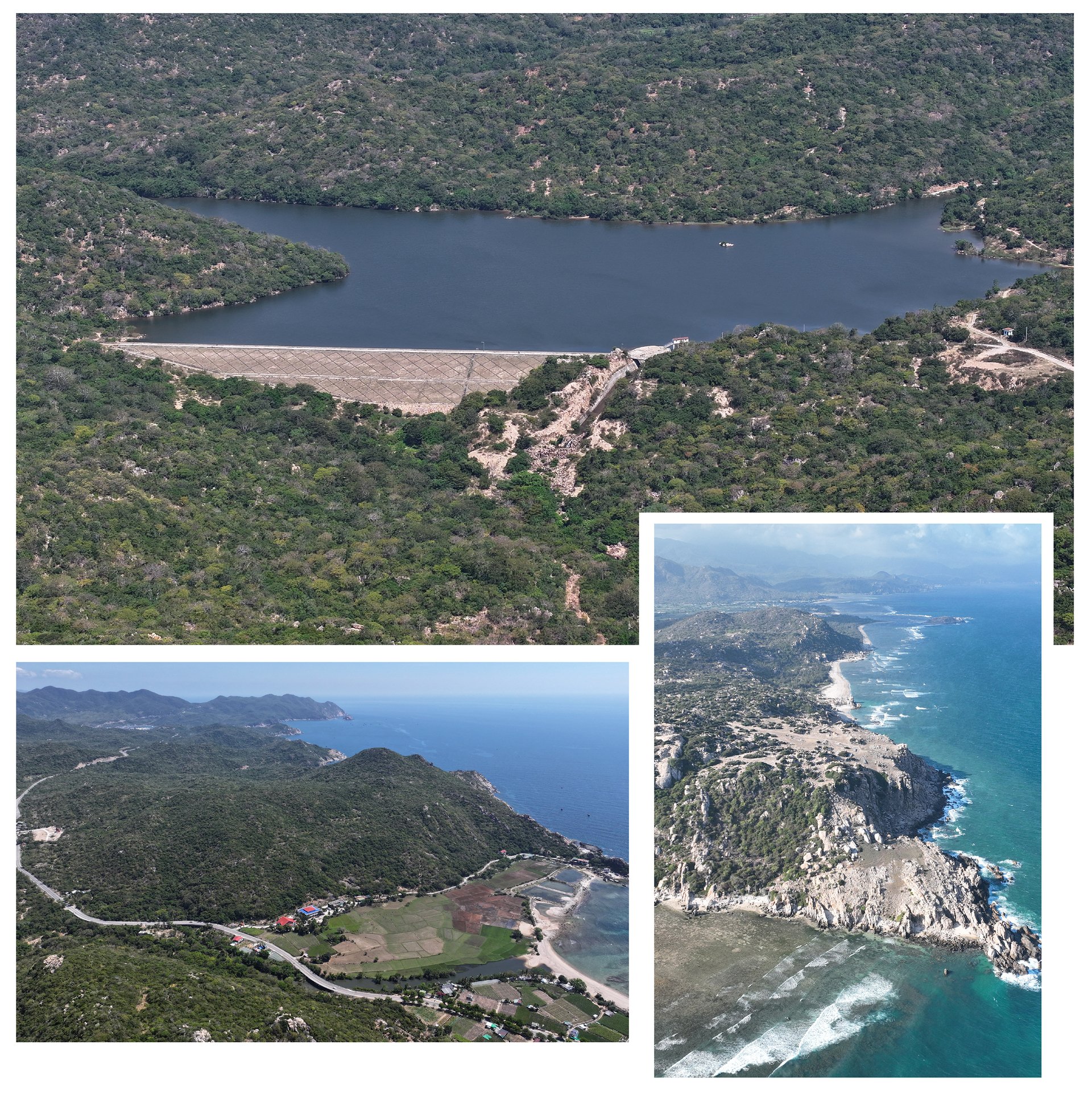
Nui Chua National Park has implemented eco-friendly and sustainable economic models. In alignment with government policy, land and forests have been allocated to local households for protection and management. Each household is entrusted with a designated forest area, and the income generated through forest protection contracts has helped improve their livelihoods. “People use income from forest protection not only to meet daily needs but also to reinvest in production, thereby fostering sustainable household economies,” Xiem explained.
Furthermore, payments for forest ecosystem services—from businesses operating in sectors such as hydropower and tourism—are reinvested in forest protection. This enables local people to improve their agricultural production and enhance living standards. “Residents are also engaged in ecotourism and associated services—working as tour guides, offering homestays, selling handicrafts, operating vineyard sightseeing tours, and managing scenic photo spots—to supplement their income,” Xiem added.
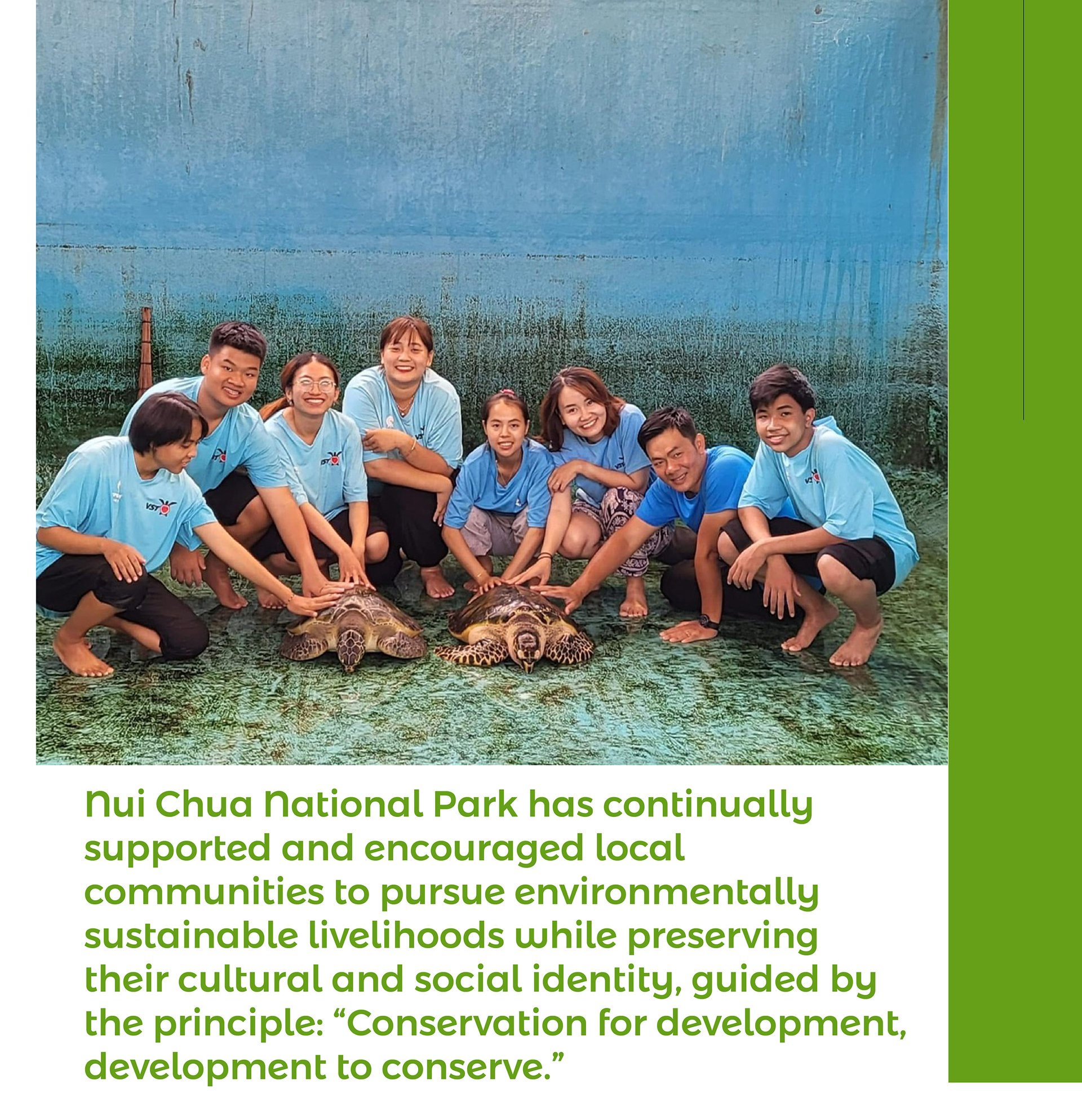
The park has supported livestock development for households involved in forest protection and afforestation. Currently, 91 households have applied for loans of VND 50 million each to develop livestock activities. To date, 52 households have received disbursements amounting to a total of VND 2.6 billion. These loans, provided through the Policy Bank, have been effectively utilised to invest in livestock, purchase crop varieties, and meet daily living costs. Most borrowers have begun seeing positive outcomes from these investments.
In 2019, the Management Board of Nui Chua National Park also allocated community support funds under Decision 24, providing VND 40 million to each of five villages. This financial assistance laid the groundwork for improving livelihoods through specific, localized models.
Currently, the park is implementing five livelihood models: a field fencing model in Cau Gay village; poultry farming models in Da Hang and Xom Bang 1 villages; a pig farming model in Xom Bang 2 village; and a clam-raising model beneath the mangrove canopy in My Hoa village, which is combined with reforestation efforts.
“We also link economic development initiatives with forest protection contracts. Assigning forest protection responsibilities to communities and introducing practical livelihood models have enabled the park to safeguard forest resources, reduce encroachment, and generate employment for local residents,” Pham Van Xiem affirmed.
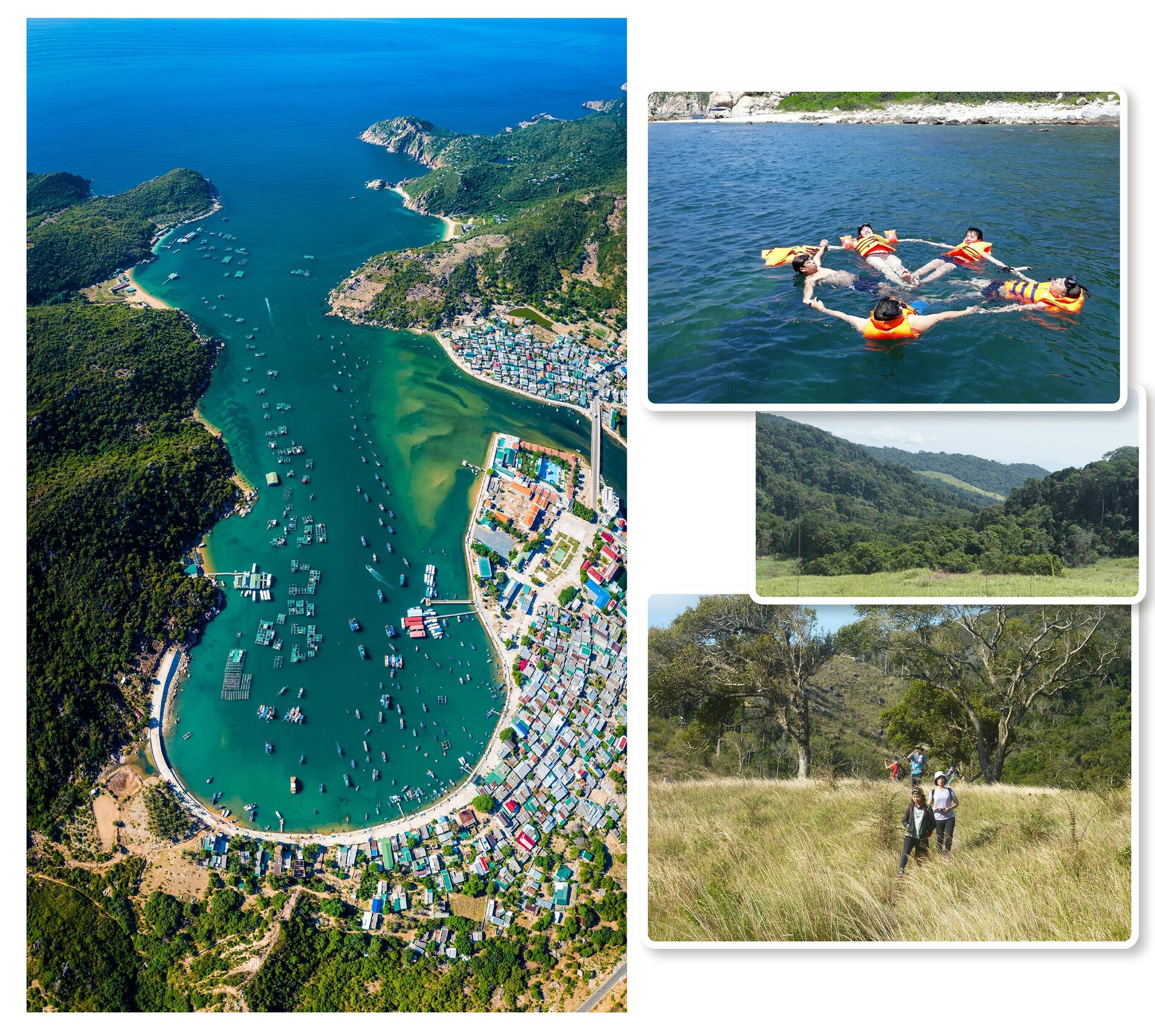

Ninh Thuan is often referred to as a “tourism paradise” with its romantic coastline, and the Nui Chua World Biosphere Reserve stands out as one of nature’s dearest treasures. With its stunning landscapes, the reserve has been attracting an increasing number of visitors, drawing in millions annually.
To meet the growing needs of tourists, Nui Chua National Park is currently developing premium sailing tourism aimed at high-income travellers. Plans are underway to establish a yacht club and develop a fleet of 100 to 200 yachts in Vinh Hy Bay.
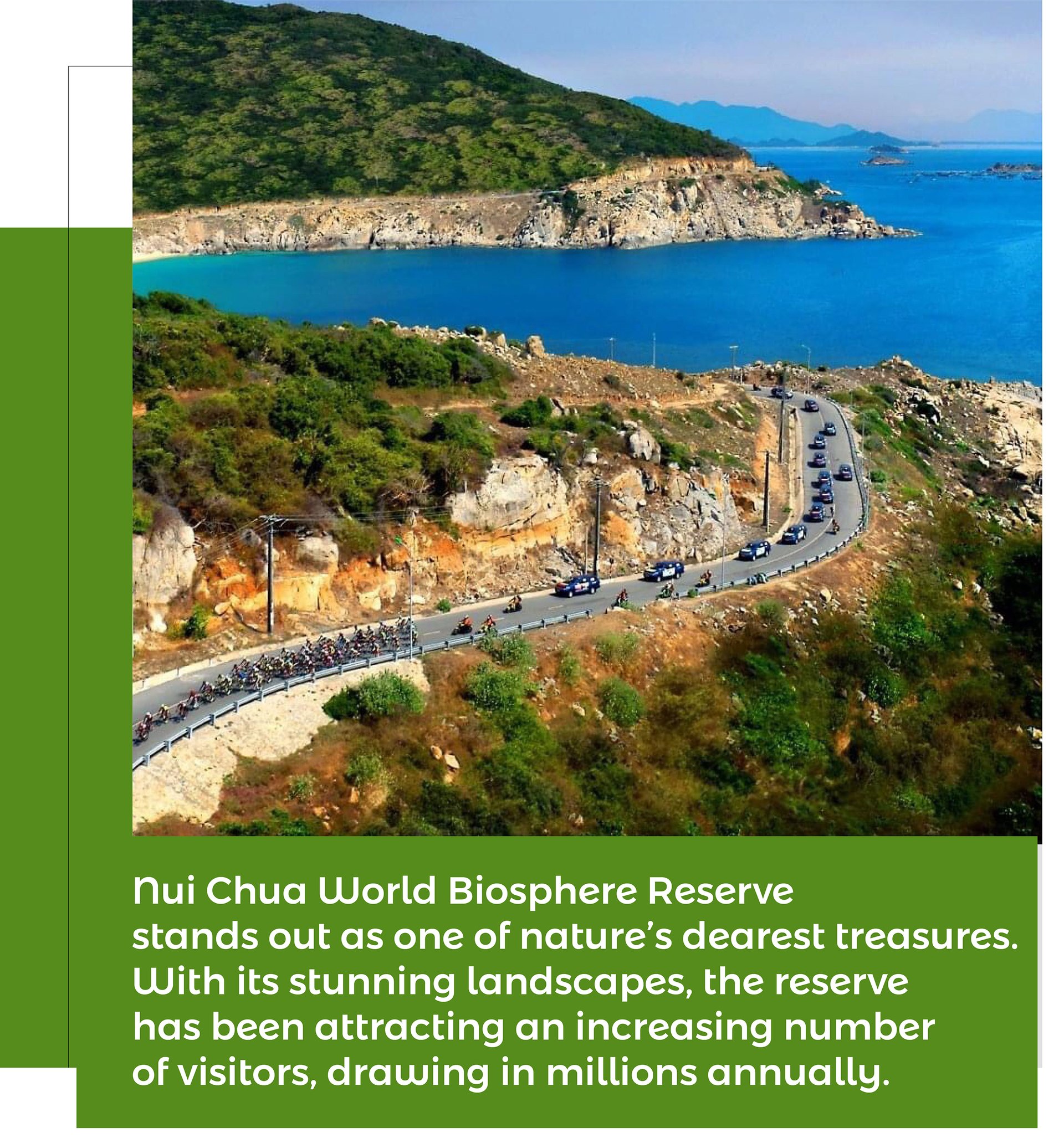
Within the Nui Chua Biosphere Reserve, resort tourism infrastructure has evolved to include high-end spas and international brands, many of which incorporate locally sourced materials specific to Ninh Thuan. Tourism is also being developed in combination with local grape wine culture, positioning the area as one of the most important destinations in Southeast Asia.
Ninh Thuan also takes full advantage of its unique natural conditions, especially its characteristic sun and wind, to develop tourism services on land, in the air, and in the sea, such as parasailing, scuba diving to observe coral reefs, and sand motorbike racing. The province is developing eco-tours and high-end resorts that prioritize environmental sustainability. At the same time, Nui Chua National Park is actively promoting cultural tourism connected to Cham relics and traditional craft villages.
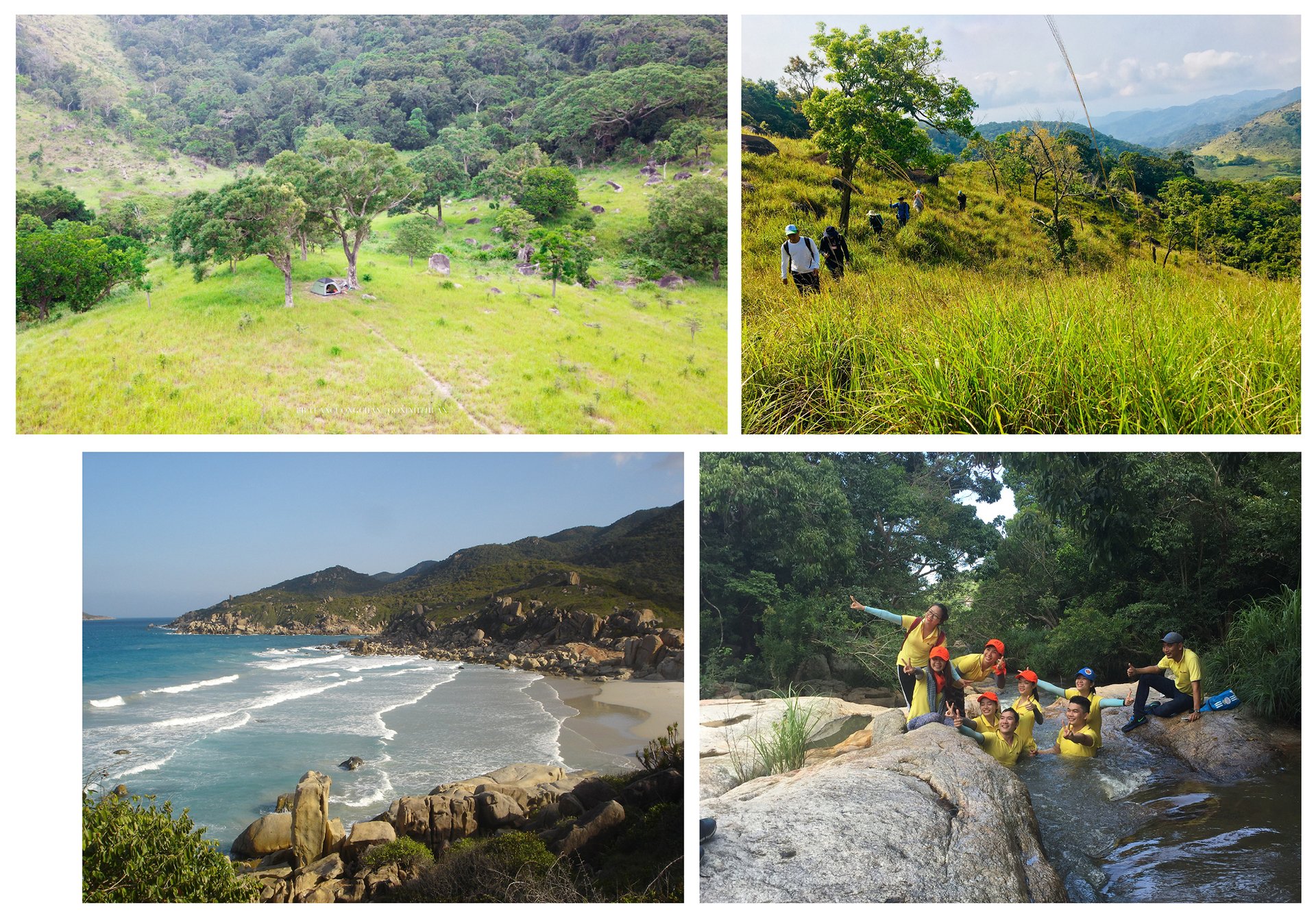
Nguyen Thanh Trung, Deputy Director of the Centre for Environmental Education and Environmental Services at Nui Chua National Park, stated that this area possesses incredibly beautiful and unique landscapes found nowhere else. One notable feature is the lake atop Da Vach Mountain, often likened to a “lake hanging on the mountain”—a rare and fascinating natural phenomenon.
“The natural lake, with a diameter of 70–80 metres, remains filled with water year-round despite being located in an extremely dry region. Surrounding the lake are many undulating rock formations, forming a miniature landscape. If restored properly, this could become an attractive destination showcasing the tropical humid forest. In addition, upstream areas like Lo O, Dong Nha, and Kien Kien streams also contain many waterfalls under five metres in height. These waterfalls cascade over naturally smoothed granite surfaces, creating a refreshing and unique scene. During holidays, visitors from all over come to enjoy this beautiful landscape,” Trung said.
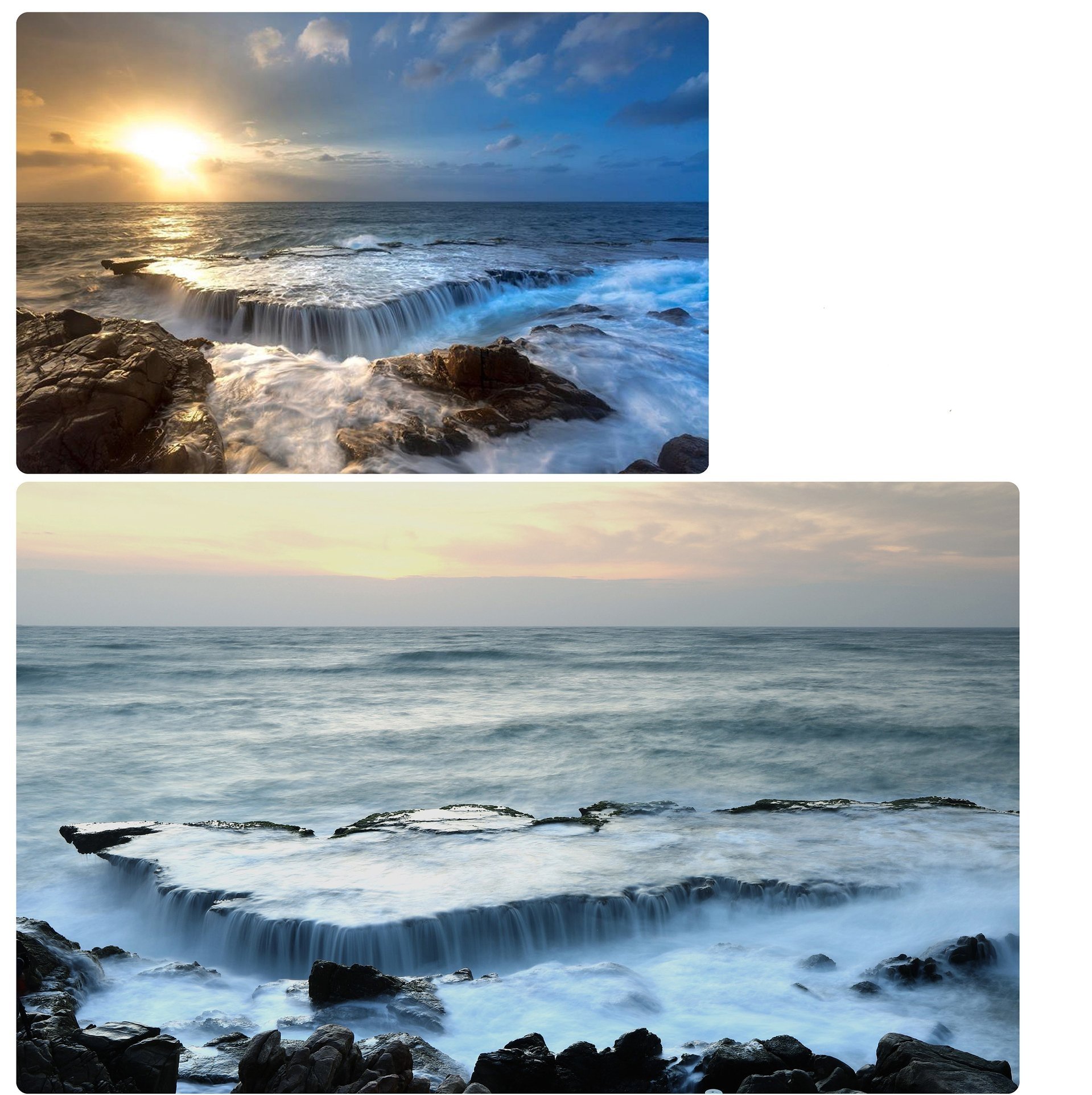
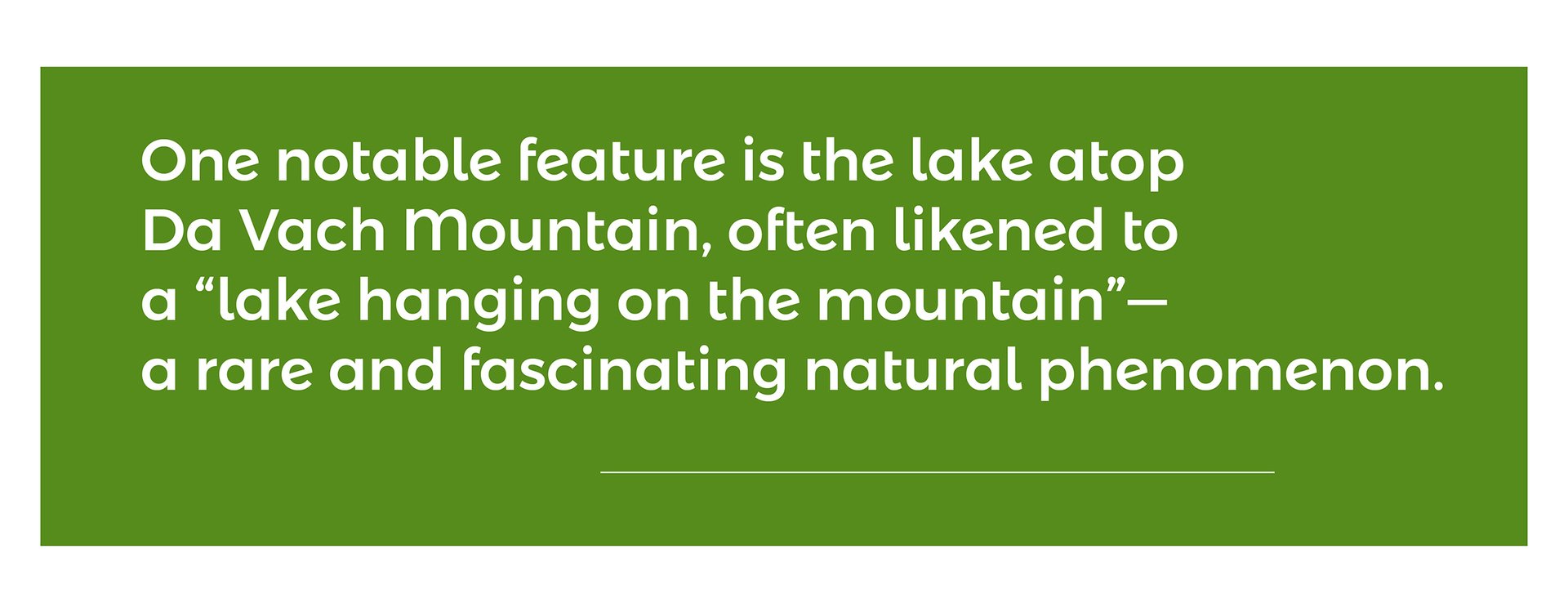
Anyone who has seen Rai Cave (also known as Otter Cave) in Nui Chua National Park will never forget its striking rock formations, stacked atop one another and extending into the sea like a dragon trying to break free from the mainland. Its structure has long attracted otters to make their homes there.
“Tourists visiting Nui Chua National Park can also admire the ‘stone park’, featuring ancient stone fields that have existed for thousands of years; or Lo O Stream, formed by small tributaries originating from the base of Nui Chua and Nui Ong mountains. There’s also Da Do Peak, created by stacked rock layers that form a beautiful natural cave. Moreover, Nui Chua National Park is home to a five-tiered waterfall and the picturesque Vinh Hy Bay,” shared Nguyen Thanh Trung.
Nestled within the captivating Nui Chua complex lies a gem not to be overlooked: Vinh Hy Bay—an enchanting coastal enclave situated approximately 40 kilometres from the heart of Phan Rang and a mere 6 kilometres from the striking Hang Rai. Embraced by towering limestone mountains and veiled in lush forest canopies, the bay unveils a tableau of serene, untouched splendour that evokes a sense of timeless tranquility. Visitors to this idyllic haven are invited to immerse themselves in a variety of nature-inspired pursuits: from gliding across crystalline waters in a kayak, to delving beneath the surface on a coral-spotting dive, or admiring the marine tapestry below through the glass pane of a bottom boat.
Alongside Ha Long Bay (Quang Ninh), Lan Ha Bay (Hai Phong), and Lang Co Bay (Hue), Vinh Hy Bay in Ninh Thuan province is recognized as one of the four most beautiful bays in Vietnam. The coral reefs, unspoiled and teeming with life, stand as a testament to the bay’s remarkable biodiversity—making Vinh Hy a sublime sanctuary for those who seek beauty in its purest form.
Nui Chua Biosphere Reserve is the 11th biosphere reserve in Vietnam to be recognized by UNESCO. Other sites in the country that have received this designation include: Can Gio Mangrove Biosphere Reserve, Dong Nai Biosphere Reserve, Cat Ba Biosphere Reserve, Red River Delta Biosphere Reserve, Kien Giang Biosphere Reserve, Western Nghe An Biosphere Reserve, Mui Ca Mau Biosphere Reserve, Cu Lao Cham–Hoi An Biosphere Reserve, Langbiang Biosphere Reserve, and Kon Ha Nung Plateau Biosphere Reserve.


